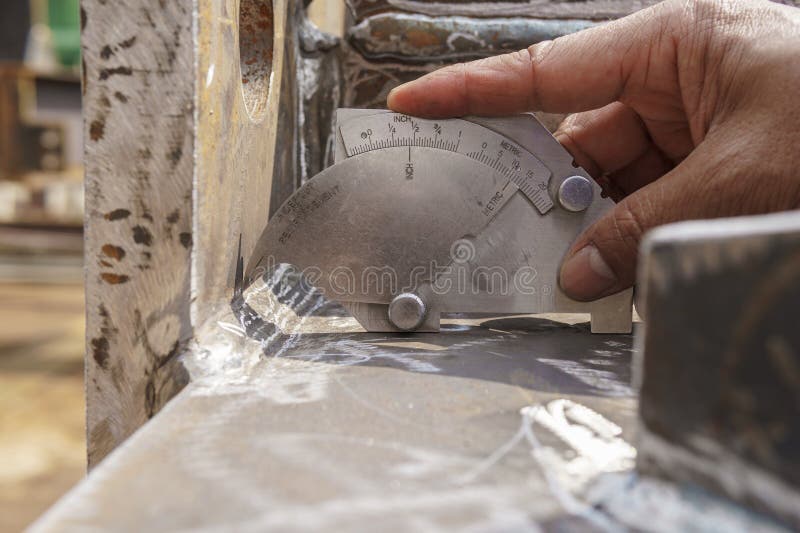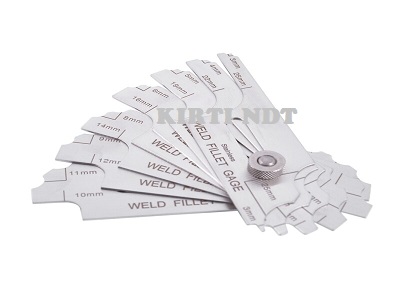Gauge Fillet Weld Explained: From Fundamentals to Advanced Techniques
Gauge Fillet Weld Explained: From Fundamentals to Advanced Techniques
Blog Article
Ingenious Approaches to Fillet Weld Assessment and Screening: Enhancing Weld Quality and Compliance Criteria
In the world of welding, the quality and integrity of fillet welds play a vital function in ensuring the structural sturdiness and dependability of different industrial components. With the continuous drive for improved effectiveness and compliance with strict requirements, the expedition of cutting-edge strategies to fillet weld evaluation and screening has actually ended up being essential. As industries advance, the traditional methods might no longer be enough in meeting the needs of modern-day welding applications (Gauge Fillet Weld). By welcoming cutting-edge innovations and techniques, a brand-new horizon of possibilities emerges in the world of weld quality evaluation and adherence to compliance standards.
Advanced Non-Destructive Testing Approaches
Utilizing advanced modern technologies, progressed non-destructive screening methods play a vital duty in making sure the integrity and top quality of fillet welds. These approaches, such as phased array ultrasonic testing (PAUT) and magnetic bit testing (MPT), deal detailed insights right into the weld's interior framework without triggering any type of damages to the material. PAUT, as an example, makes use of multiple ultrasonic components to evaluate the weld from various angles, giving a comprehensive visualization of prospective problems like lack of combination or splits.
By utilizing these advanced non-destructive screening techniques, weld inspectors can precisely assess the top quality of fillet welds, making certain conformity with market criteria and policies. The capacity to detect problems early on not just boosts weld high quality yet likewise protects against pricey rework or failures in structural stability, highlighting the importance of these cutting-edge screening approaches in welding assessments.
Robotics and Automation in Evaluation

The integration of robotics and automation has actually revolutionized the inspection procedure for fillet welds, improving performance and accuracy in quality analysis. Robotics provide accurate control and repeatability in inspecting welds, making sure trustworthy and constant outcomes. Automated systems can be set to comply with particular examination paths, making sure comprehensive coverage of welds and minimizing the danger of human error.
Robotic examination systems furnished with advanced sensors can discover and gauge weld features with high accuracy, providing in-depth data for analysis. These systems can recognize problems such as fractures, absence of combination, and porosity, enabling punctual corrective activities to be taken. In addition, robotics and automation enable real-time data collection and analysis, offering immediate responses to operators and facilitating quick decision-making processes.
Moreover, the usage of robotics and automation in fillet weld assessment boosts total performance by minimizing examination times and raising assessment throughput. By improving the examination procedure, suppliers can make sure weld quality and compliance requirements are satisfied efficiently, eventually bring about set you back savings and enhanced product quality.
Making Use Of Expert System for Analysis
Man-made intelligence plays an essential role in boosting the effectiveness and precision of evaluation in fillet weld evaluation procedures. AI algorithms can rapidly process large quantities of information from weld examinations, identifying problems or inconsistencies that may be challenging to recognize with the nude eye.
Furthermore, AI systems can pick up from previous assessment data, consistently enhancing their capacity to recognize prospective problems and variances in fillet welds. This flexible knowing capacity enhances the total quality control process, reducing the possibility of human error and making certain that welds satisfy the needed criteria. By integrating man-made intelligence into fillet weld evaluation, markets can accomplish greater levels of performance, uniformity, and compliance in their inspection methods.
Portable Tools for On-Site Inspection
Enhancing area inspection efficiency, the adoption of mobile tools reinvents on-site assessment processes for fillet welds. These devices supply flexibility and ease, enabling examiners to conduct thorough exams in numerous places, including remote or difficult atmospheres. Mobile tools such as ultrasonic screening tools, magnetic fragment examination equipment, and electronic radiography systems offer real-time information and high-resolution imaging abilities, allowing fast decision-making and prompt responses on weld high quality.
One significant benefit of portable devices is their capability to streamline evaluation treatments, lowering downtime and improving overall productivity - Gauge Fillet Weld. Inspectors can quickly deliver these tools to various job websites, getting rid of the demand for carrying heavy machinery or parts to off-site facilities. In addition, the transportability of these tools advertises cost-effectiveness by decreasing transport expenditures and increasing evaluation timelines
Additionally, the usage of portable tools for on-site assessment advertises positive quality control steps, as inspectors can without delay identify and deal with any kind of prospective welding problems or disparities. By integrating these innovative innovations into on-site examination techniques, welding specialists can make sure compliance with sector standards and improve weld high quality, ultimately leading to improved architectural honesty and safety in different welding applications.
Assimilation of Data Monitoring Equipment

Having actually maximized on-site assessment processes via the utilization of mobile devices, the next phase involves the smooth combination of information management systems to better improve efficiency and data evaluation abilities in fillet weld evaluation and screening. By integrating information administration systems right into the examination process, organizations can enhance information collection, storage space, and evaluation. This assimilation enables real-time monitoring of weld quality, prompt recognition of problems, and go to these guys timely decision-making Recommended Site to remedy any type of concerns that may arise throughout the evaluation process.
Information monitoring systems play an essential role in systematizing inspection information, assisting in very easy gain access to for authorized personnel, and ensuring information integrity and safety. Via the integration of these systems, examiners can generate extensive records, track historic data for fad evaluation, and improve total procedure performance. The integration of data management systems allows seamless interaction between various stakeholders involved in the examination process, promoting cooperation and enhancing total top quality control procedures. Inevitably, the combination of data monitoring systems offers to boost the requirements of fillet weld assessment and screening, making certain conformity with market guidelines and improving weld quality.
Conclusion
In verdict, ingenious methods to fillet weld examination and testing have significantly enhanced weld top quality and compliance requirements. Advanced non-destructive testing approaches, robotics, automation, expert system, portable devices, and data monitoring systems have actually reinvented the way weld assessments are conducted. By utilizing these innovations, industries can guarantee that welds fulfill the called for high quality criteria and regulations, inevitably boosting total effectiveness and security in welding processes.

Having optimized on-site assessment processes through the usage of portable devices, the following stage involves the smooth assimilation of data management systems to additionally enhance efficiency and data evaluation abilities in fillet weld inspection and screening. Inevitably, the combination of data management systems offers to elevate the criteria of fillet weld examination and testing, making certain compliance with sector laws and boosting weld top quality.

Report this page